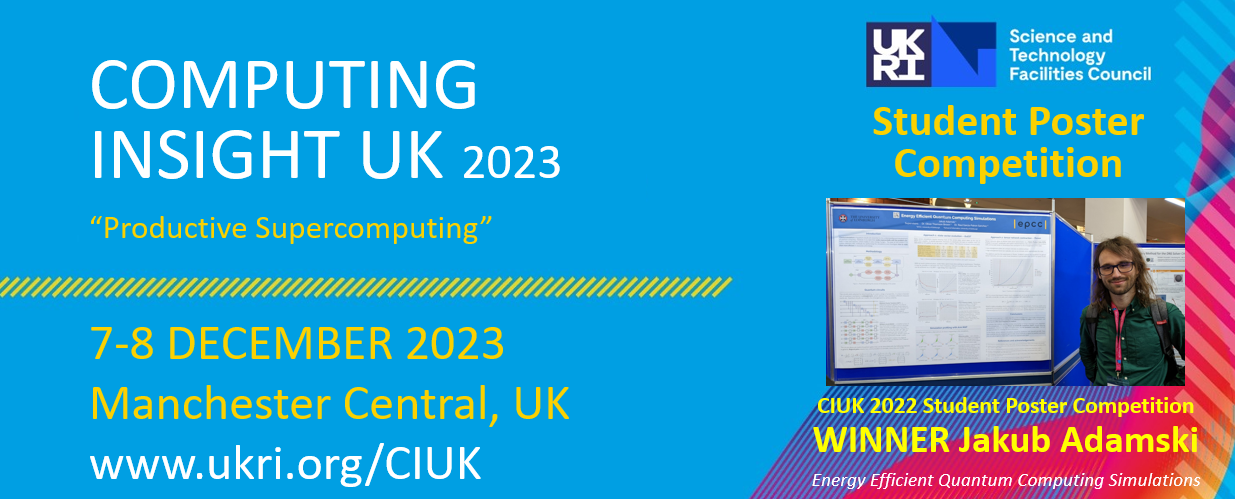
Congratulations JESSICA GOULD (UKRI-STFC)
CIUK 2023 Poster Competition Winner
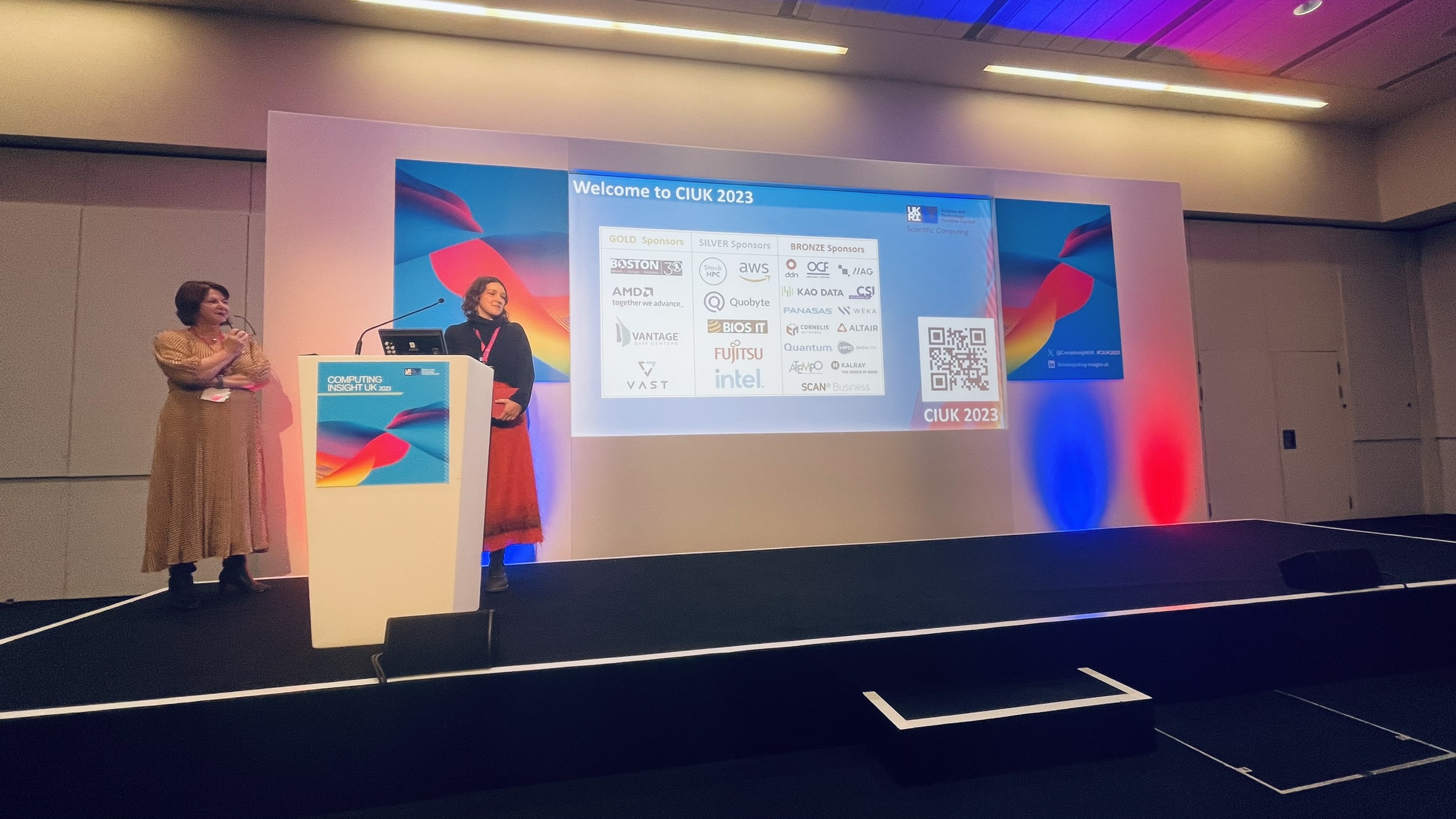
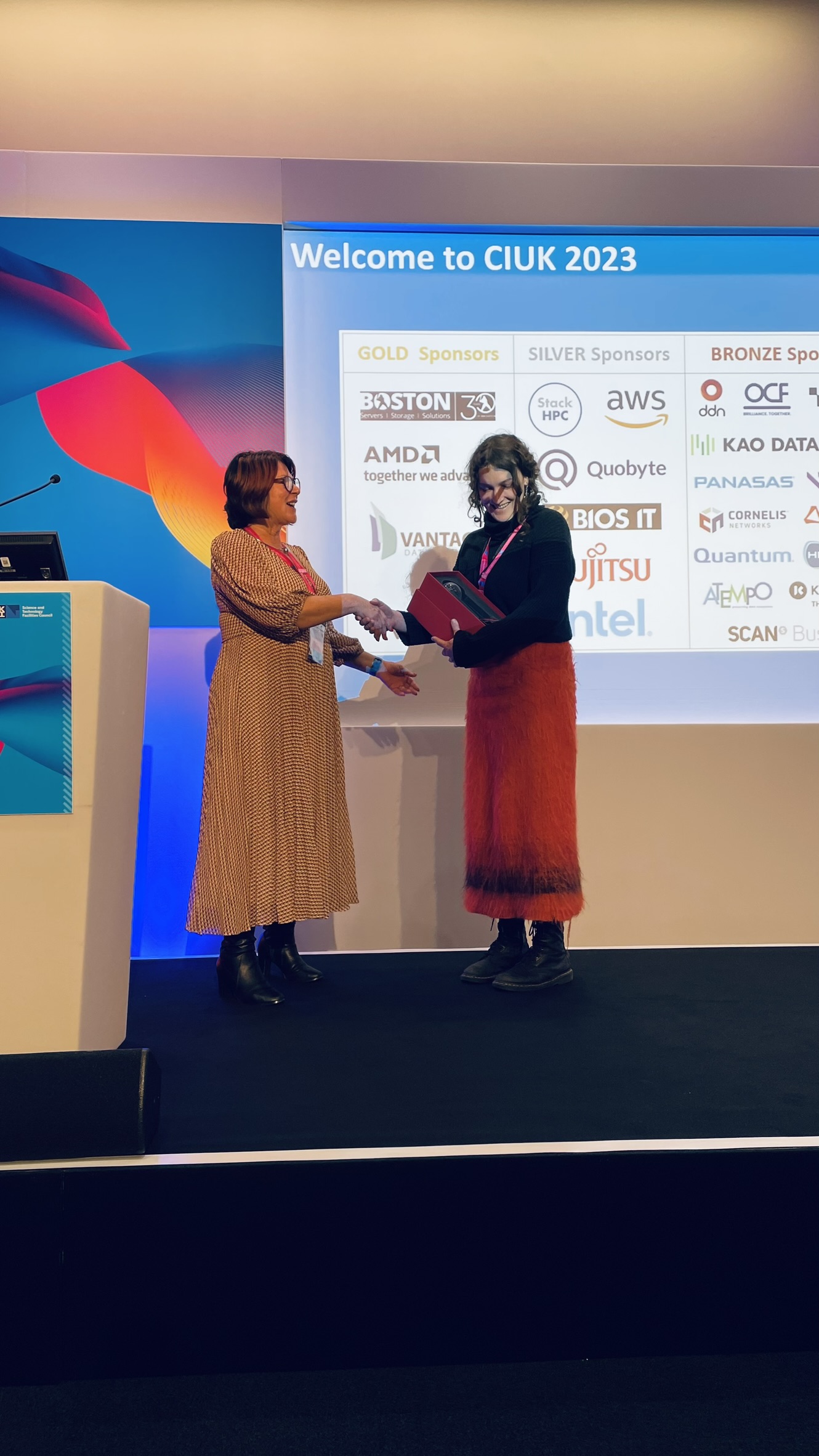
The CIUK 2023 Poster Competition Finalists
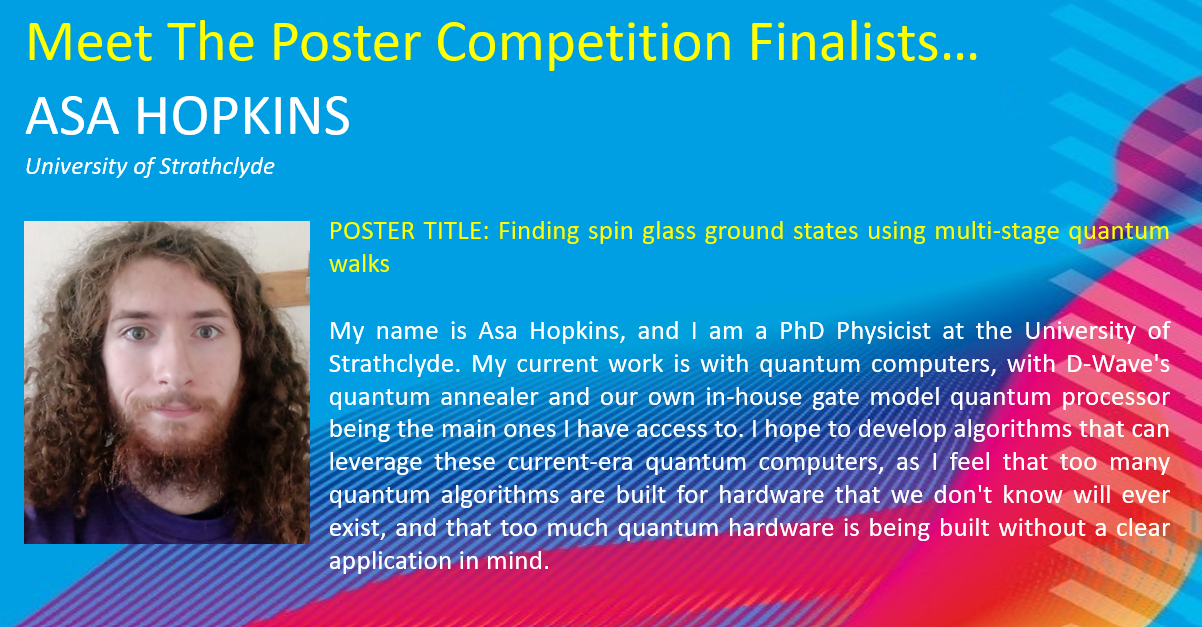
Some current quantum devices use quantum annealing to perform quantum computation, which comes with a theoretical guarantee of success when enough time is given. This time, however, grows exponentially with problem size. An alternative model called a quantum walk does not have the guarantee of success but also avoids the exponential time needed. In practice, the success rate is exponentially small, making it no better. In this poster, a technique called multi-stage quantum walks is investigated, which can be seen as interpolating a quantum anneal by chaining together quantum walks. For the specific problem of finding spin-glass ground states, numerical results seem to suggest that multi-stage quantum walks only require polynomial time to find a solution, as surprisingly the optimal number of stages needed does not grow exponentially.
| 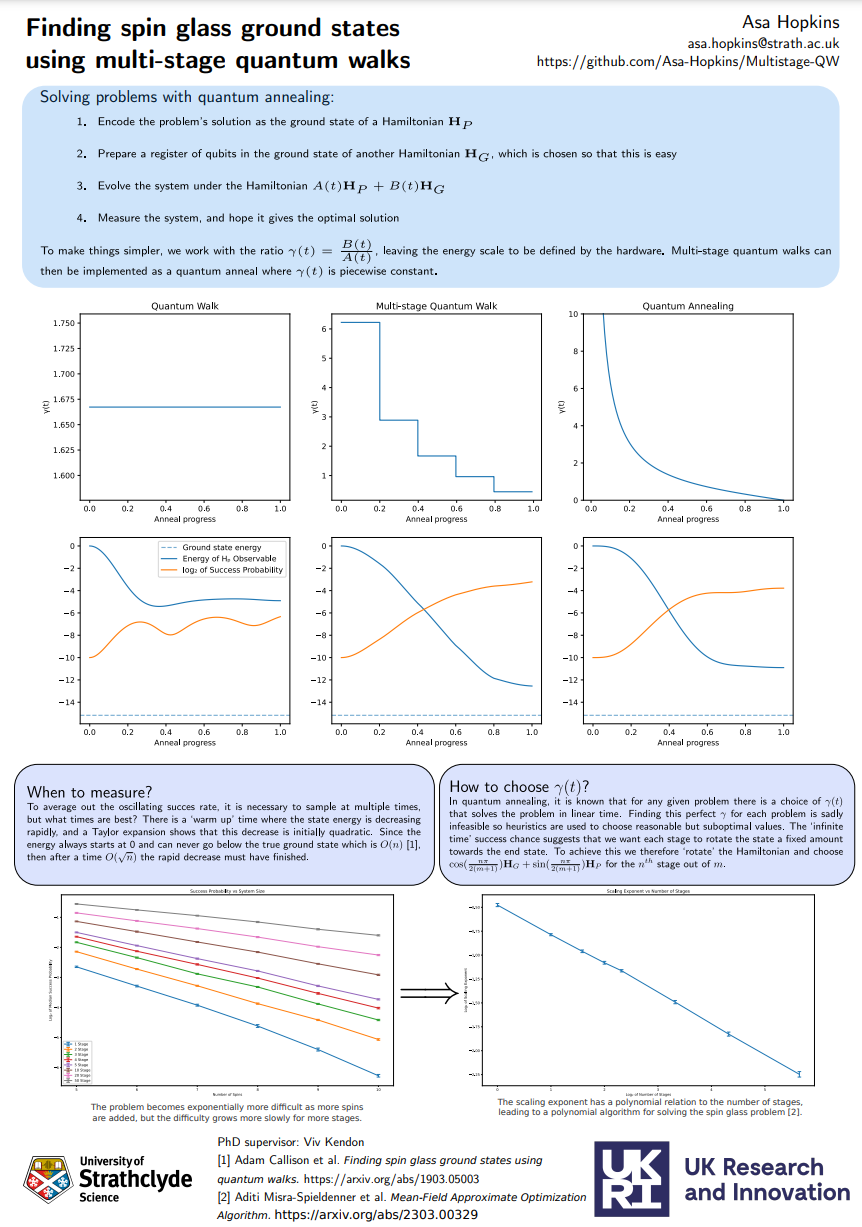
|
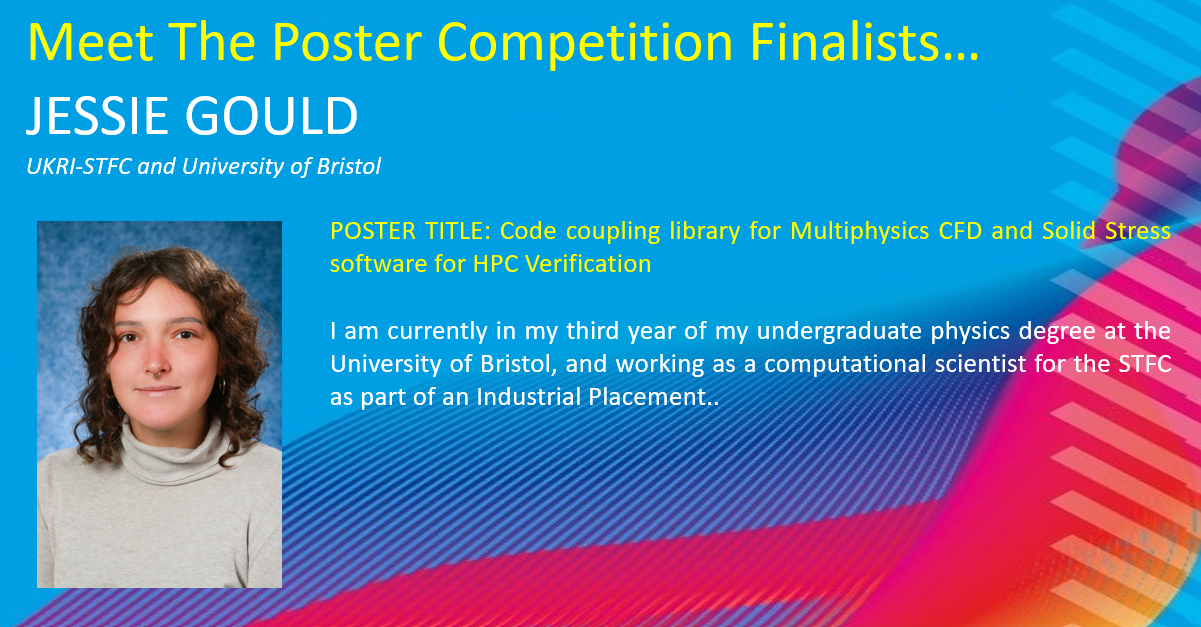
This project couples programs that model thermoelastic effects with computational fluid dynamics for engineering the neutron and muon spallation source target, TS2 at ISIS. The ultimate aim is to develop a Multiphysics code coupling library that will be useable in a container, meaning it can be run in a diverse range of supercomputing environments. It shows considerations for parallel computing, how it can be used for productive HPC and the ease of use of the new open source software library.
| 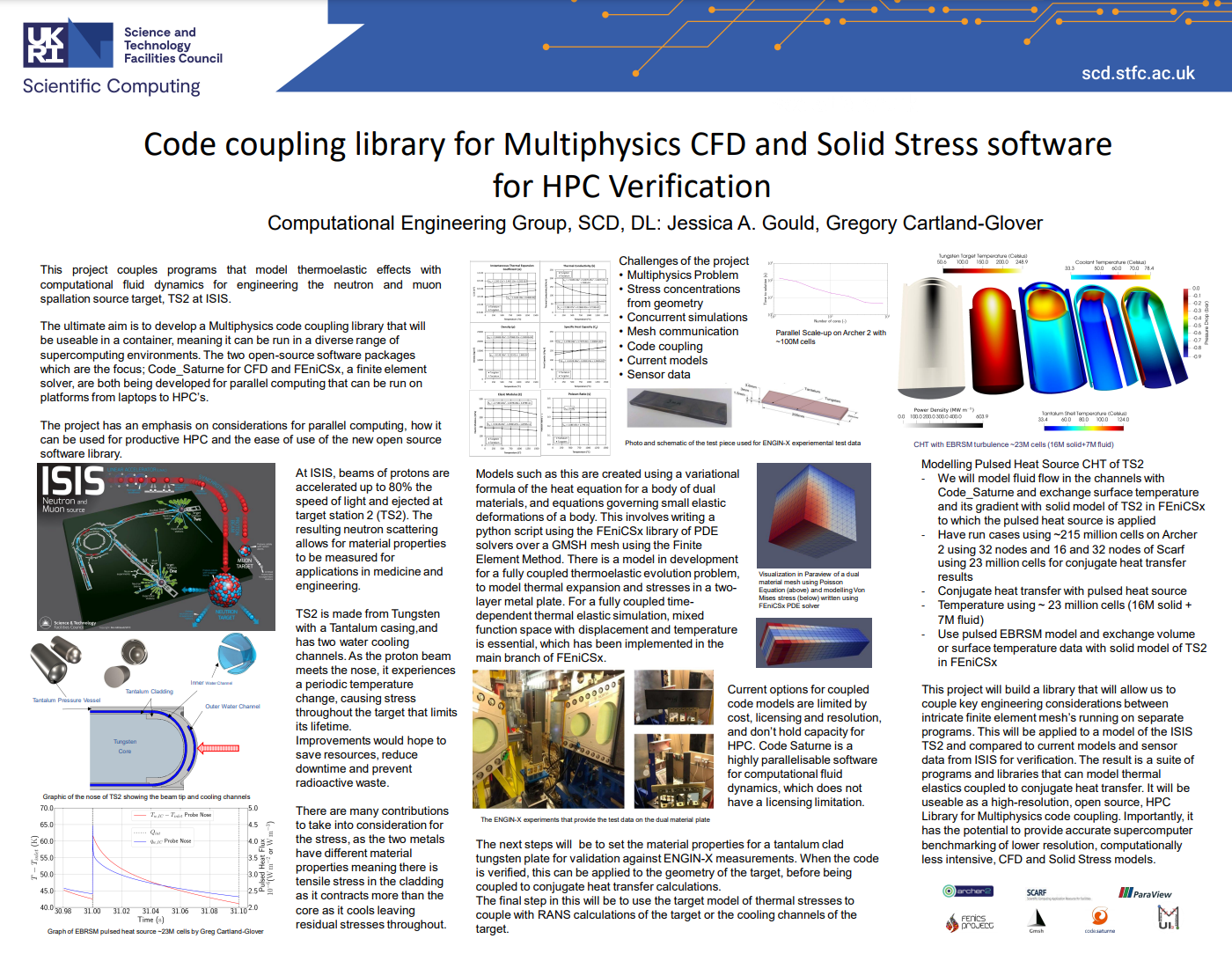
|
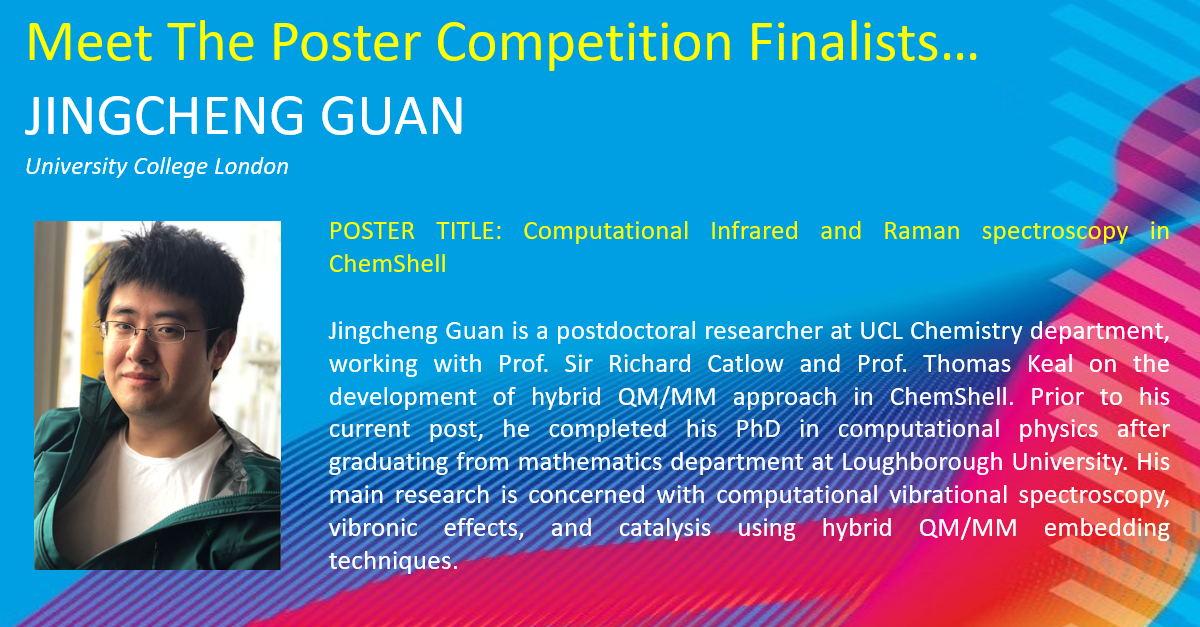
To aid the interpretation of experimental vibrational spectra, we developed and implemented computational infrared and Raman facilities in the ChemShell computational chemistry environment using hybrid quantum mechanical and molecular mechanical approach. Density functional theory for the electronic structure calculations and classical forcefields for the environment are employed. Computational vibrational spectra for chemical active sites are reported using electrostatic and fully polarizable embedding to achieve more realistic vibrational signatures of material systems, including solvated molecules, proteins, zeolites and metal oxide surfaces, providing useful insight into the effect of the chemical environment on the signatures obtained from experiment. This work has been facilitated by the efficient task-farming parallelism implemented in ChemShell for high-performance computing platforms.
| 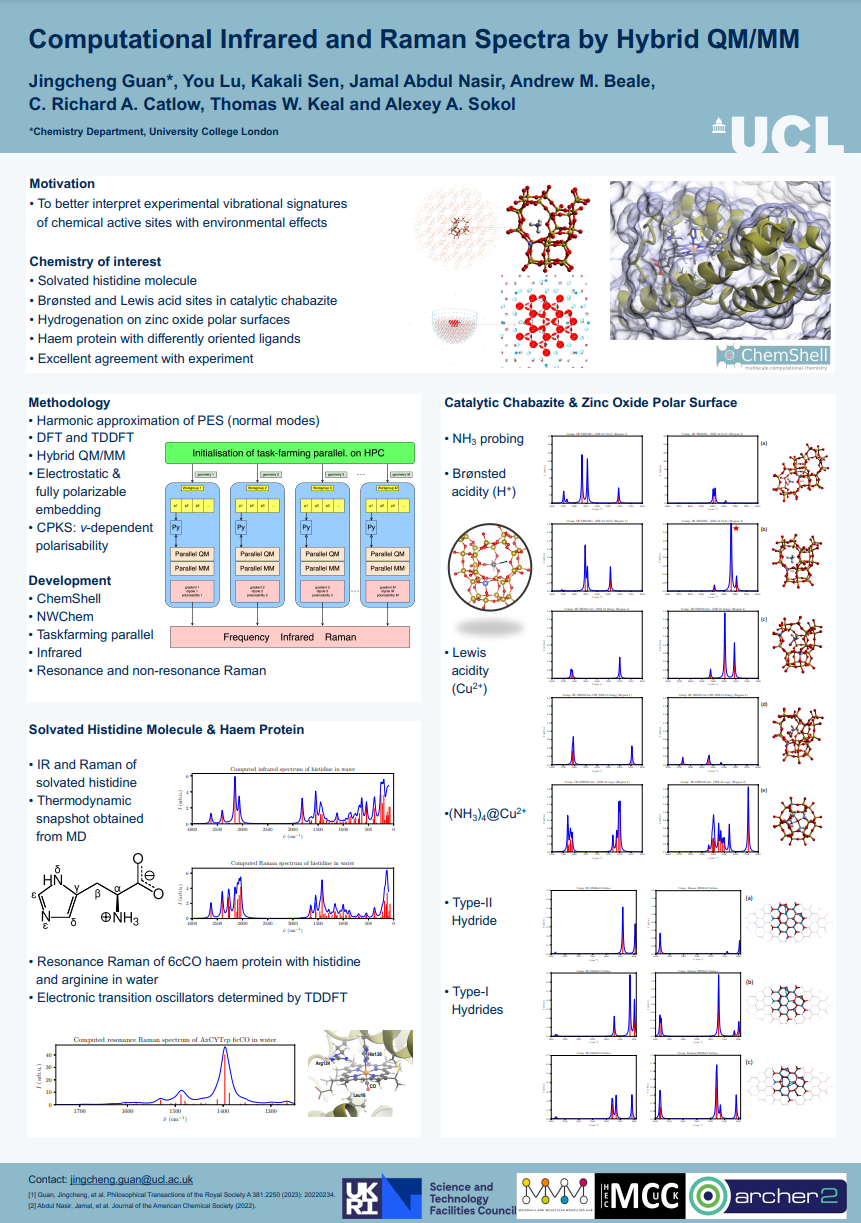
|
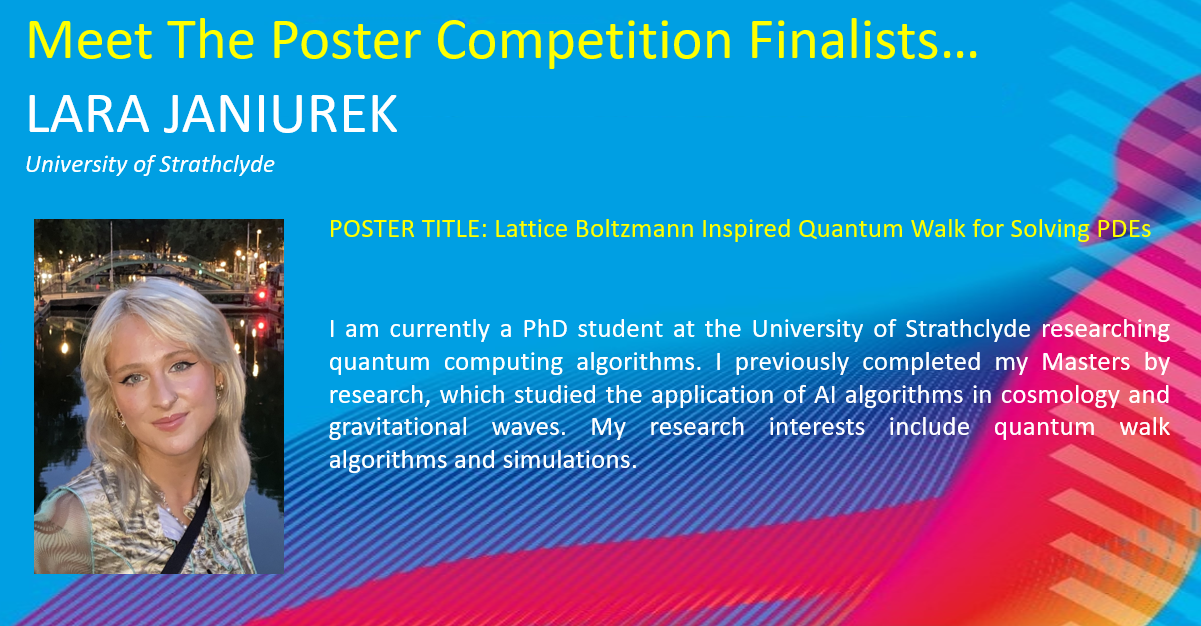
Efficiently solving Partial Differential Equations (PDEs) holds potential for substantial scientific advancements across various disciplines. This work aims to create a quantum algorithm involving a quantum walk for solving PDEs in a fluid dynamics context. We seek an algorithm applicable on practical quantum computers. The algorithm being currently developed is inspired by Lattice Boltzmann methods, and aims to simulate families of PDE, enabling parameter tuning to match desired PDEs.
| 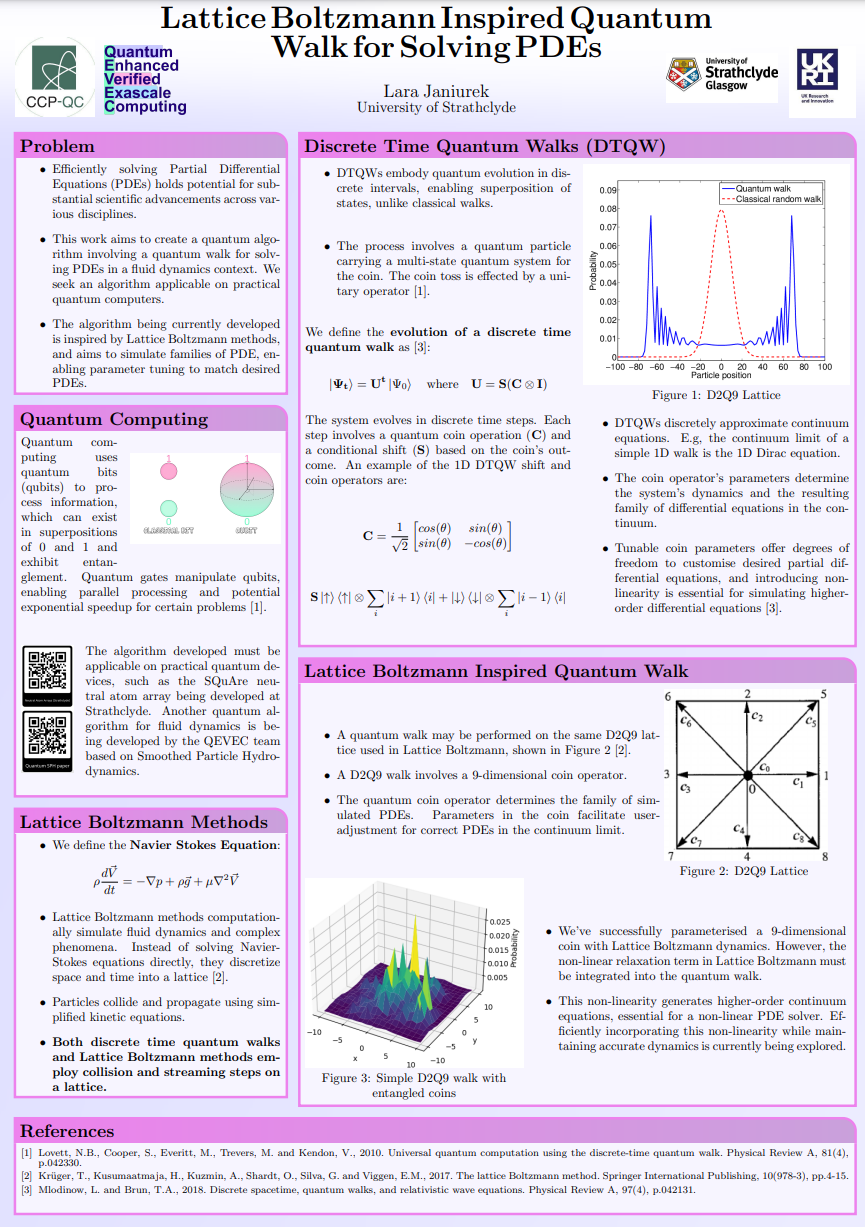
|
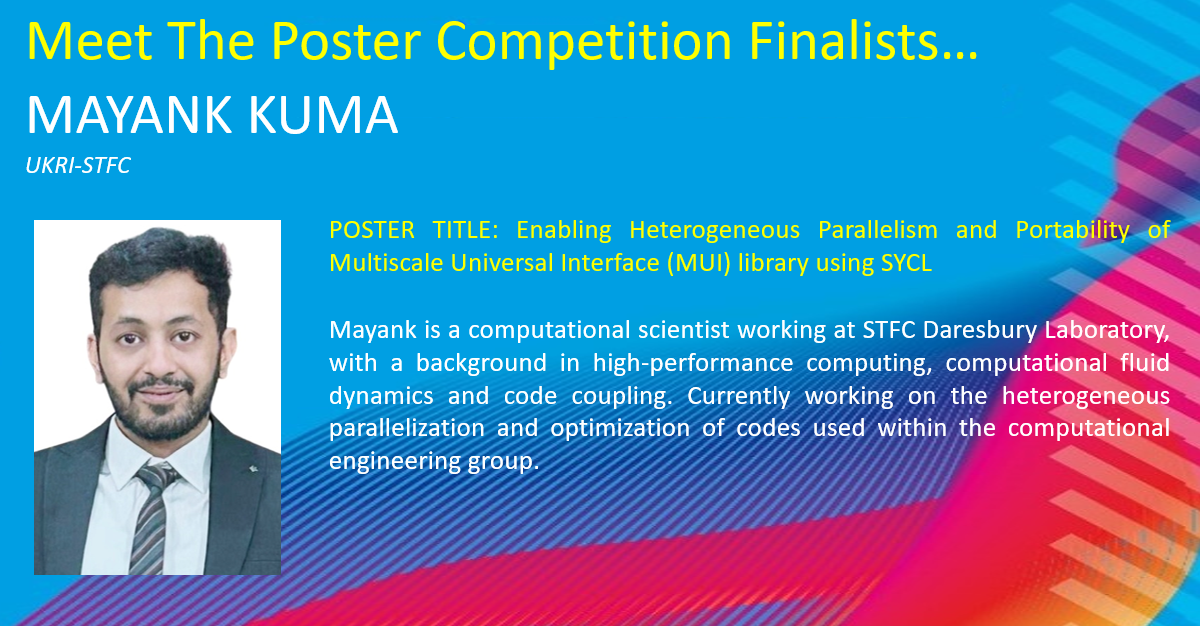
The poster outlines a successful initial implementation of SYCL to accelerate aspects of the MUI code coupling library targeting heterogeneous systems, underscoring the advantages of using this standard in the context of a complex coupled scientific computing workflow. We aim to provide insights into the practical aspects of developing and optimising SYCL-accelerated code and showcase the potential for wider adoption of this programming model in scientific and engineering applications. We demonstrate the practical application of the SYCL-based MUI library through case studies and benchmarks, showcasing its potential to enhance the parallel performance for coupling various scientific and engineering solvers. The poster serves as a resource for researchers and developers seeking to harness the power of SYCL to tackle the challenges of code coupling in parallel computing environments and heterogeneous systems.
| |
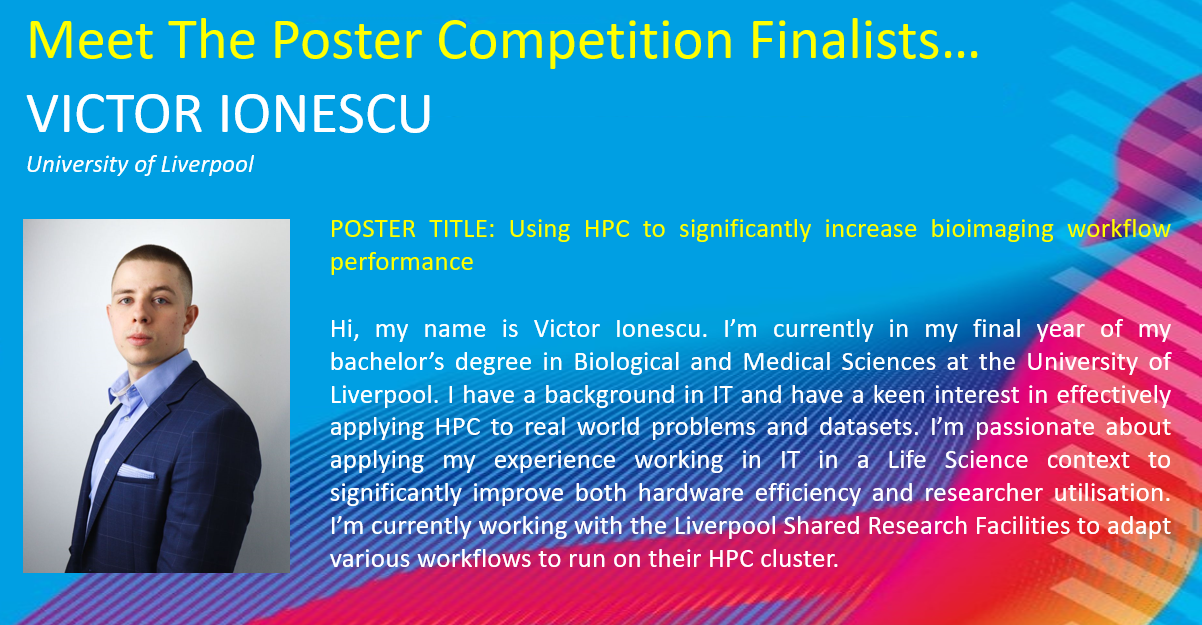
Data processing and analysis has been identified as the area which typically consumes the most time for bioimaging researchers and requires the most user involvement (Schmidt, C., et al. 2022). In the fields of electron and light microscopy this can be in part due to the large volume of data produced. In recent years several tools have become available that leverage machine learning which despite the high computational requirements of these tools and high volume of data, many are still used through a GUI on a single workstation leaving very little headroom for automatisation and improvements in runtime. We believe many of these workflows can be adapted for use on a HPC cluster. However, there is a significant barrier to entry, requiring skills typically alien to bioimaging researchers such as experience using Linux CLI. We look to improve accessibility to HPC by providing users with a familiar GUI and user configurable workflows which can scale across a HPC cluster.
| |
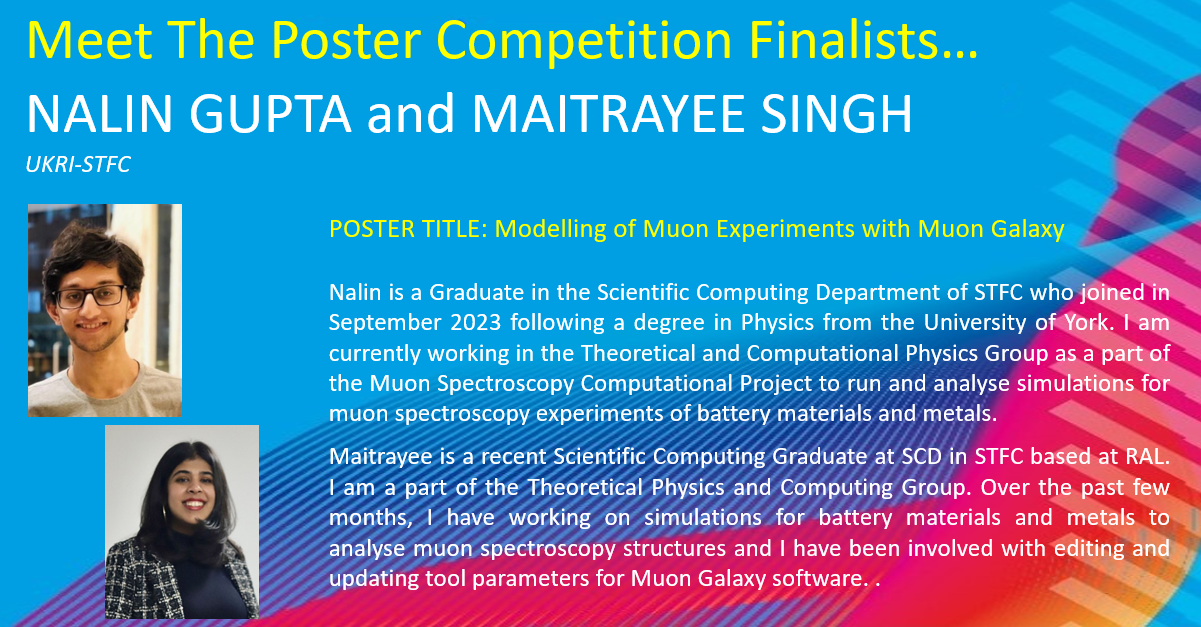
In this poster we present the Muon Spectroscopy Computational Project (MSCP)- an initiative of the Scientific Computing Department (SCD) to develop sustainable and easy to use software for the interpretation of muon experiments. Particularly, we focus on an example of the application of pymuon-suite - one of the software tools being developed and maintained by MSCP as an implementation in Muon Galaxy - for the prediction of muon stopping sites in crystalline materials LiGaX4 (X = Cl, Br, I) and LiCoO2, which are being studied for their potential as battery materials.
| 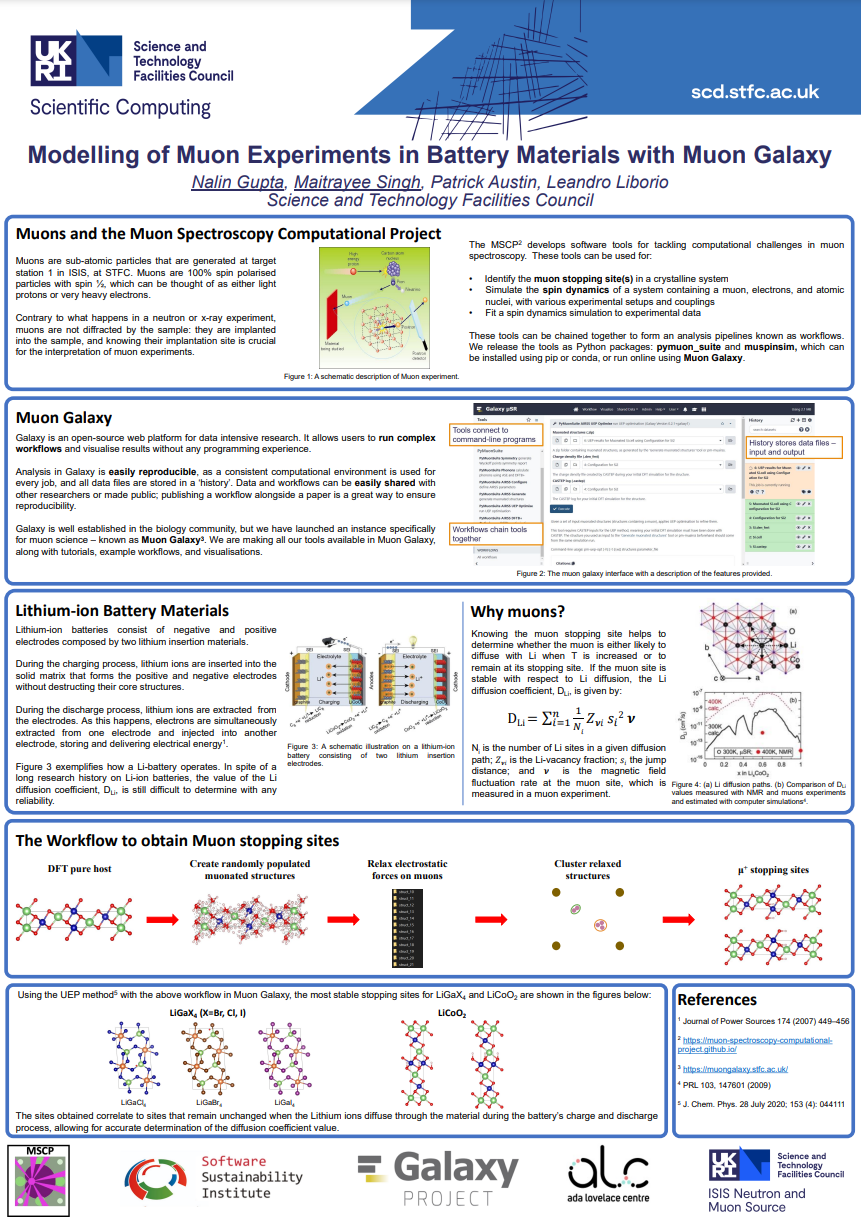
|
The theme for this year's conference is "Productive Supercomputing (Accessible and diverse large scale computing)" with sub-themes including "User Support", "Industry Use of HPC", “Making HPC More Accessible”, “User Portals”, “Convergence of AI and Simulation” and "Co-Design of Supercomputing Services and Systems". Topics of interest also include, but are not limited to, all forms of advances in high performance computing, storage, networking, big data analysis, quantum computing, and software development.
Selected posters will be displayed physically at the conference and also online, as well as being included in the official conference proceedings. We plan to display selected posters online from Monday 6 November and physically at the conference on 7-8 December, where a panel of judges will select their winning poster. The winner will be announced before the final session on the afternoon of Friday 8 December.
All selected posters should be displayed physically at the conference before 9:30am on Thursday 7 December. CIUK is not responsible for printing any selected posters - all posters must be printed by the applicant. Selected poster presenters will receive FREE entry to the conference.
Important deadlines:- Sunday 29 October – deadline for submission of abstracts
- w/c Monday 6 November – applicants informed of panel decision
- From Monday 6 November - posters uploaded to CIUK 2023 website
- Thursday 7 December - posters displayed at CIUK 2023
- Friday 8 December - competition winner announced.
Please note that the poster competition is restricted to undergraduate and graduate students plus early career researchers (within 5 years of qualification).
